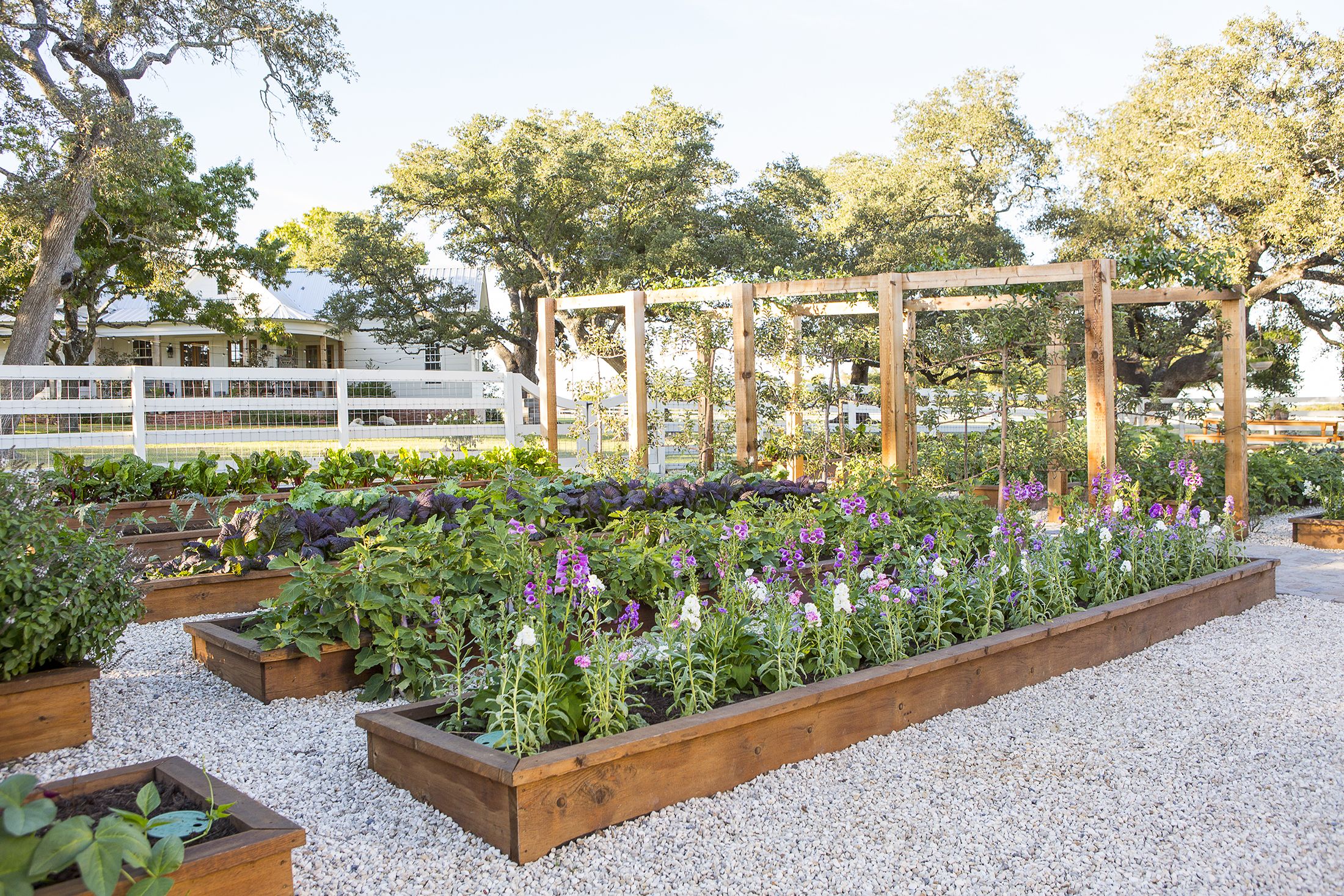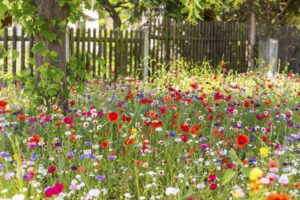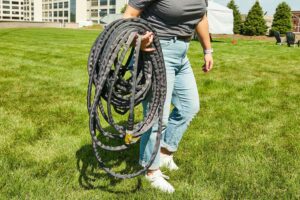Joanna Gaines’ Garden: Creating Rustic Elegance in Your Outdoor Space
There’s something magical about stepping into a garden that balances functionality with beauty—a space that feels both productive and peaceful. Few have mastered this balance better than Joanna Gaines, whose thoughtfully designed garden spaces have become as iconic as her signature farmhouse interiors. From her stained cedar raised beds to her charming garden shed, Joanna’s outdoor spaces offer a masterclass in creating gardens that are both hardworking and heartwarming.
In this article, we’ll explore the key elements of Joanna Gaines’ garden design and provide practical guidance for incorporating her approach into your own outdoor space. Whether you’re looking to build your first raised bed or create a complete garden transformation, these insights will help you create a garden that’s both beautiful and meaningful.
The Philosophy Behind Joanna’s Garden Design
Before diving into the specific design elements, it’s worth understanding the philosophy that guides Joanna’s approach to garden design. For her, gardens aren’t just places to grow plants—they’re extensions of the home and reflections of the family’s story.
“What began as a shy interest in growing some vegetables for dinner has turned into a love of place,” Joanna shared in a recent Magnolia Journal article about her garden journey. This perspective informs every aspect of her garden design, from the materials she chooses to the plants she grows.
Joanna’s garden philosophy centers around three core principles:
- Blending functionality with beauty – Creating spaces that serve practical purposes while remaining visually appealing
- Honoring heritage through design – Using materials and techniques that connect to the past
- Creating spaces for family connection – Designing gardens that bring people together and create memories
These principles can be seen throughout her garden spaces at her farmhouse and at the Magnolia Silos in Waco, Texas.
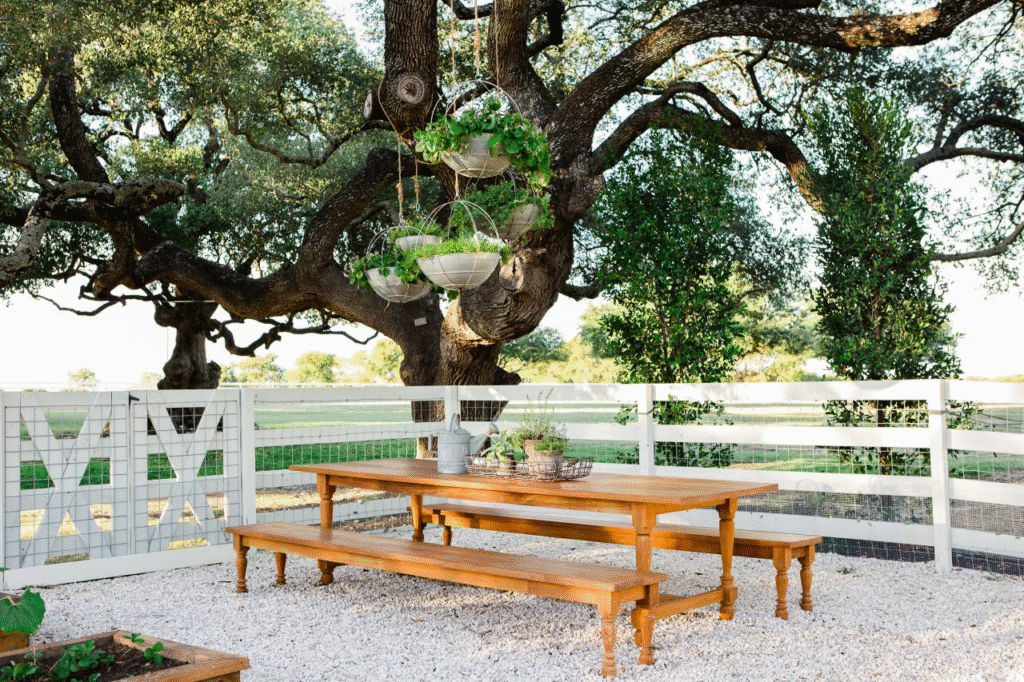
Joanna Gaines’ Signature Raised Garden Beds
Perhaps the most recognizable element of Joanna’s garden aesthetic is her beautifully crafted raised beds. These aren’t just functional growing spaces—they’re architectural features that create structure and visual interest throughout the garden.
Design Features of Joanna’s Raised Beds
Joanna’s raised beds share several distinctive characteristics:
- Rich, dark stain – Her cedar beds feature a deep mahogany stain that creates beautiful contrast with the surrounding landscape and plants
- Generous height – At 24-30 inches tall, the beds are both ergonomically friendly and visually substantial
- Clean, simple construction – The beds feature straight lines and minimal embellishment, letting the materials speak for themselves
- Thoughtful arrangement – Beds are arranged in geometric patterns with consistent spacing, creating a sense of order and intention
Benefits of Raised Bed Gardening, Joanna-Style
While raised beds offer practical advantages for any gardener, Joanna’s approach maximizes these benefits while adding aesthetic value:
- Improved soil control – The generous depth allows for premium soil mixtures
- Extended growing seasons – The elevated soil warms faster in spring
- Reduced maintenance – Defined growing areas minimize weeding and maintenance
- Architectural structure – The beds provide year-round visual interest, even in dormant seasons
- Design flexibility – The modular nature allows for creative arrangements and pathways
Creating Your Own Joanna-Inspired Raised Beds
If you’re looking to recreate Joanna’s raised bed aesthetic in your own garden, consider these tips:
- Choose quality materials – Cedar is naturally rot-resistant and ages beautifully with proper care
- Consider scale carefully – Beds should be proportional to your overall garden space
- Use non-toxic stains – Select garden-safe stains that won’t harm plants or leach chemicals
- Create consistent spacing – Leave enough room between beds for comfortable access and maintenance
- Consider sight lines – Place shorter plants at the front of beds and taller varieties toward the back
The Magic of Joanna’s Garden Pathways
The spaces between Joanna’s raised beds are just as important as the beds themselves. Her thoughtfully designed pathways create a sense of journey and discovery through the garden.
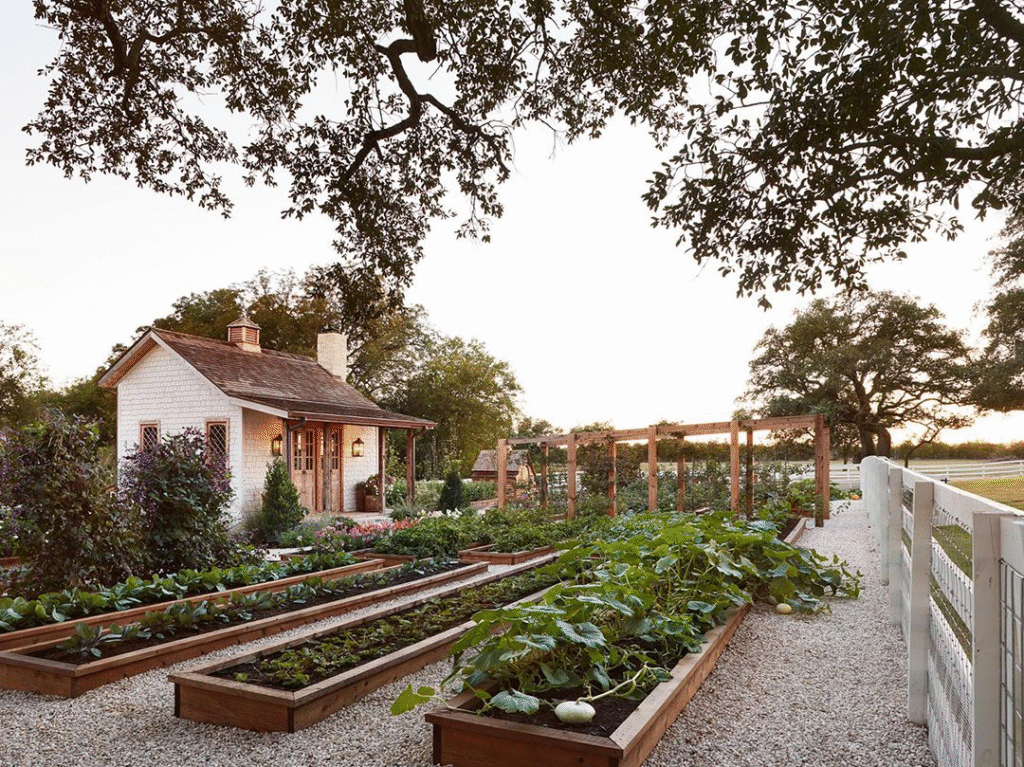
Pathway Materials and Design
Joanna typically uses one of two materials for her garden pathways:
- White pea gravel – Creates a bright, reflective surface that contrasts beautifully with dark stained beds
- Crushed decomposed granite – Offers a more natural, earthy appearance while still providing good drainage
The pathways are generous in width—typically 3-4 feet—allowing for comfortable movement and creating a sense of spaciousness even in smaller gardens.
Pathway Edging and Borders
To maintain clean lines and prevent material migration, Joanna’s pathways usually include:
- Simple metal edging – Creates a crisp division between pathway and planting areas
- Occasional border plantings – Low-growing herbs or flowers that soften edges and create interest
- Strategic hardscape elements – Occasional stones or pavers that add texture and visual anchors
Joanna’s Ranunculus: The Stars of Her Spring Garden
When it comes to planting choices, Joanna has a special fondness for ranunculus, which have become signature flowers in her spring garden displays. These beautiful blooms, with their paper-thin petals in vibrant colors, create a stunning display that embodies the joyful exuberance of Joanna’s garden aesthetic.
Why Ranunculus Steal the Show
Ranunculus have captured Joanna’s heart for several reasons:
- Early bloomers – They’re among the first flowers to appear in spring, signaling the garden’s awakening
- Multi-layered beauty – Their rose-like blooms feature intricate, layered petals
- Versatile color palette – Available in a range of colors from soft pastels to vibrant hues
- Extended bloom time – With proper care, they provide weeks of continuous color
- Excellent cutting flowers – Perfect for Joanna’s beloved floral arrangements
Joanna has shared that ranunculus were initially an experiment in her garden that “completely won her over” when they bloomed with layers of pinks, oranges, and creams. They’ve since become a cornerstone of her spring garden design.
Companion Plantings for Ranunculus
In Joanna’s garden, ranunculus are often complemented by:
- Anemones – These similar-looking flowers share the same growing requirements
- Tulips – Especially double varieties that echo the layered petals of ranunculus
- Sweet peas – Adding vertical interest and fragrance alongside the ranunculus
- Daffodils – The classic spring bulb that creates a cheerful backdrop
The key to successful companion planting, according to garden experts who’ve studied Joanna’s approach, is grouping plants with similar sun, water, and soil preferences for both visual cohesion and easier maintenance.
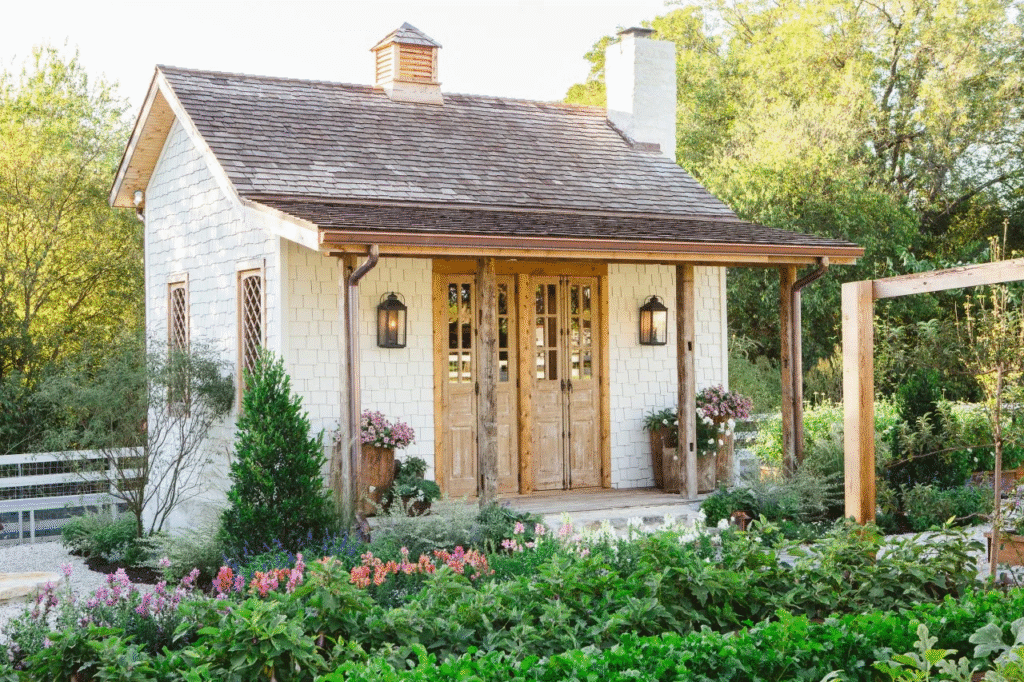
The Heart of the Garden: Joanna’s Garden Shed
No element of Joanna’s garden design has captured more attention than her charming garden shed—though “shed” hardly does justice to this multi-functional space. Featured prominently on an episode of “Fixer Upper,” Joanna’s garden building serves as a potting area, storage space, retreat, and occasional dining spot.
Architectural Elements of the Garden Shed
Joanna’s garden shed blends new construction with salvaged materials to create a space that feels timeless:
- Vintage doors and windows – Salvaged pieces create character and connection to the past
- Textured shingle siding – Adds visual interest and complements their 120-year-old farmhouse
- Wraparound porch – Expands the usable space and creates transitions to the garden
- Cupola with finial – Adds architectural interest and traditional charm to the roofline
- Stonework details – A custom fireplace and foundation add texture and permanence
Interior Design Features
Inside, the shed balances practicality with comfort:
- Farmhouse sink – A deep utility sink for garden tasks
- Metal-wrapped countertops – Durable surfaces that can handle potting soil and water
- Open shelving – Accessible storage for garden books and supplies
- Central work table – Multi-purpose space for projects, planning, and occasional meals
- Comfortable seating – Making the space inviting for longer stays
- Stone fireplace – Extending the usability of the space into cooler seasons
Creating Your Own Garden Retreat
While few can replicate Joanna’s garden shed exactly, these principles can guide a smaller-scale version:
- Blend old and new – Incorporate at least one salvaged architectural element
- Prioritize light – Generous windows make the space feel larger and more inviting
- Plan for indoor-outdoor flow – Create easy transitions between inside and garden spaces
- Include comfortable seating – Make it a place you want to linger, not just work
- Add personal touches – Include elements that tell your story and make the space uniquely yours
Creating Structure and Visual Interest: Trellises and Garden Features
Joanna’s garden incorporates vertical elements that draw the eye upward and create architectural interest throughout the seasons.
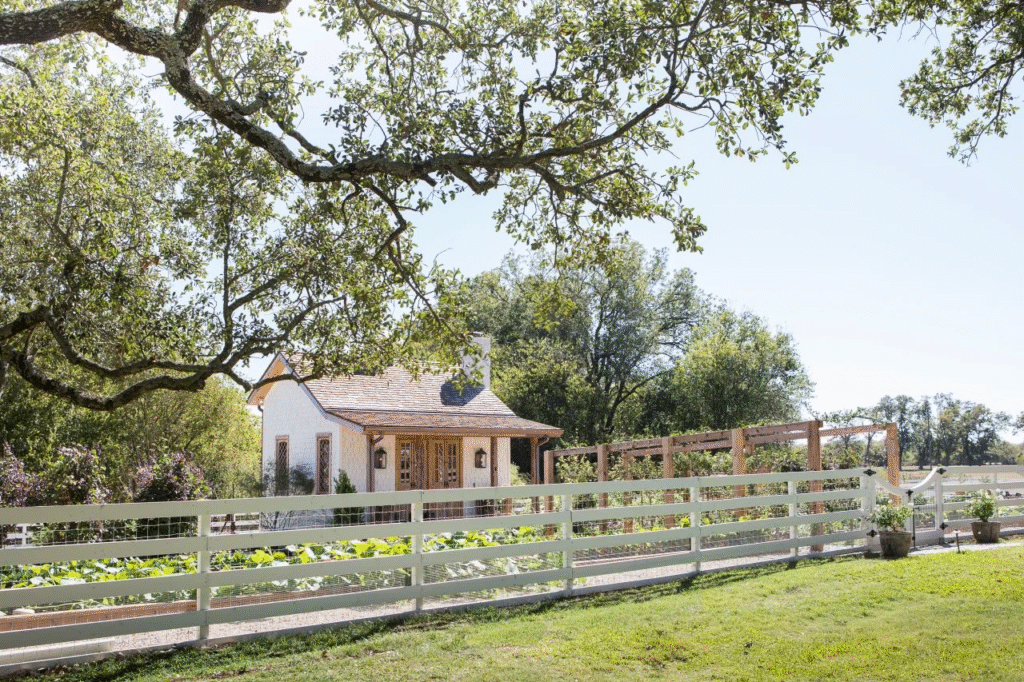
Trellis Designs and Functions
Trellises in Joanna’s garden serve both practical and aesthetic purposes:
- Tunnel arbors – Creating enchanting pathways through the garden
- Bean teepees – Playful structures that make vegetable growing fun for children
- Garden hoops – Providing support for climbing plants and protective coverings
These structures are typically constructed from natural materials like wood or metal in simple, classic designs.
Functional Garden Features
Beyond trellises, Joanna incorporates other hardworking elements:
- Chicken coop and run – Providing fresh eggs while helping with pest control
- Outdoor dining area – A teak table with benches for family meals in the garden
- Garden bench – Creating spots for rest and contemplation within the garden
- String lighting – Extending the usability of the garden into evening hours
Bringing It All Together: The Joanna Gaines Garden Philosophy
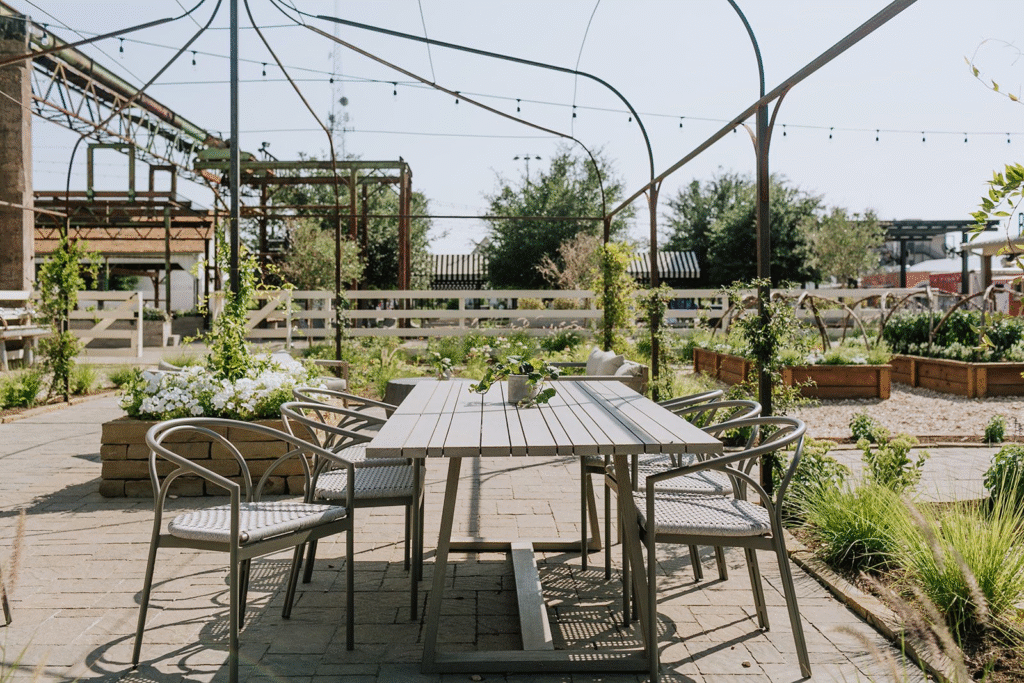
What makes Joanna’s garden approach so compelling is how she balances several sometimes-competing priorities:
- Productivity with beauty – Growing food and creating visual delight
- Structure with wildness – Combining geometric hardscaping with natural plantings
- Tradition with innovation – Honoring classic techniques while trying new approaches
- Personal expression with family function – Creating a space that’s both beautiful and useful
Lessons from Joanna’s Garden Journey
Throughout her gardening journey, Joanna has shared several insights that can benefit gardeners at any level:
- Start small and grow gradually – Joanna’s garden began with just a single raised bed
- Embrace experimentation – Try new varieties each season
- Involve the whole family – Make gardening a shared experience
- Create spaces for gathering – Design gardens for connection, not just growing
- Balance planning with spontaneity – Leave room for nature’s surprises
Conclusion: Creating Your Own Joanna-Inspired Garden
Whether you have acres of land or just a small backyard, the principles behind Joanna Gaines’ garden design can be adapted to your own space. By focusing on quality materials, thoughtful design, and creating spaces that reflect your family’s story, you can create a garden that’s both beautiful and meaningful.
Remember that gardens evolve over time—Joanna’s own garden has transformed over the course of fifteen years. Start with one element that speaks to you, whether it’s a beautifully stained raised bed or a favorite spring flower like ranunculus, and let your garden grow from there.
As Joanna herself has said about her garden, “It’s equal parts counsel and comfort, teacher and learner.” By approaching your garden with this mindset, you’ll create a space that nourishes both body and soul for years to come.
